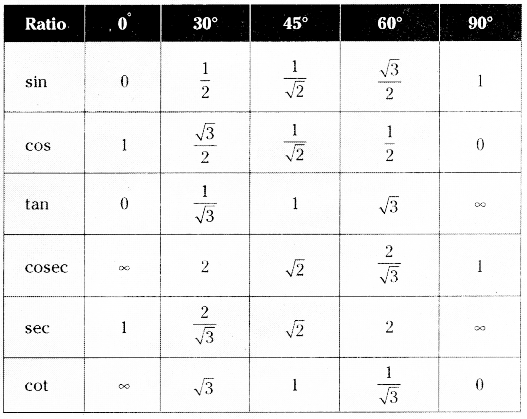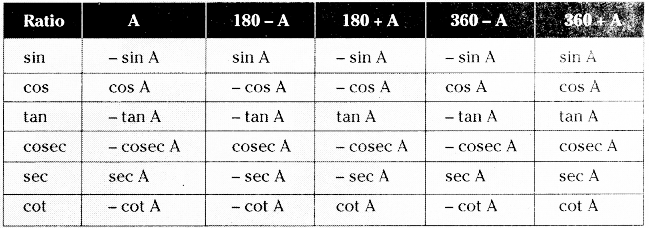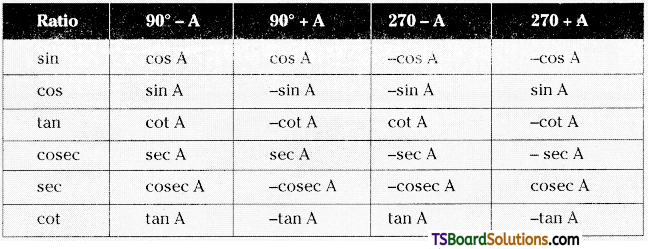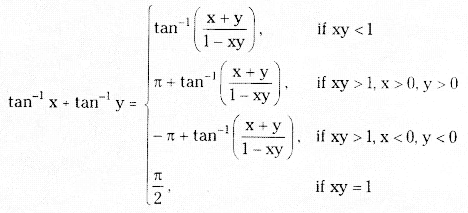Learning these TS Inter 1st Year Maths 1A Formulas Chapter 4 Addition of Vectors will help students to solve mathematical problems quickly.
TS Inter 1st Year Maths 1A Addition of Vectors Formulas
→ Scalar : A physical quantity having magnitude is called a scalar.
E.g. : Length, mass, area, volume, temperature, speed etc.
→ Vector : A physical quantity having both magnitude and direction is called a vector.
Ex : Displacement, velocity, acceleration, force, angular momentum.
→ Modulus of a vector : If a vector \(\overline{\mathrm{AB}}\) is denoted by a̅ then |a̅|. denote the length oi the vector of a̅ also |a̅| is called the magnitude or modulus of a vector a .
→ Collinear or parallel vectors : Vectors along the same line or along the parallel line are called collinear vectors. In figure \(\overline{\mathrm{AB}}, \overline{\mathrm{BC}}, \overline{\mathrm{CA}}\) are collinear vectors. Two vectors a̅ b̅ are parallel or collinear iff a̅ = tb̅ . t ∈ R.
→ Like vectors: Collinear or parallel vectors having the same direction are called like vectors.
![]()
→ Unlike vectors:
Collinear or parallel vectors having opposite direction are called unlike vectors.

![]()
→ Unit vector:
A vector whose modulus is unity is called a unit vector. The unit vector in the direction of vector a̅ is denoted by a̅̂. Thus modulus of |a̅̂| = 1.
- Unit vector in the direction of a̅ is \(\frac{\overline{\mathrm{a}}}{|\overline{\mathrm{a}}|}\).
- Unit vector in the opposite direction of a̅ is \(\frac{-a}{|\bar{a}|}\).
→ Position vector : If a point ‘O’ is fixed as origin in the plane and ‘A’ is any point then \(\overline{\mathrm{OA}}\) is called the position vector of A’ with respect to ‘O’.
→ Triangle law of addition of vectors: In a triangle OAB, let \(\overline{\mathrm{OA}}\) = a̅, \(\overline{\mathrm{AB}}\) = b̅ then the resultant vector \(\overline{\mathrm{OB}}\) is defined as \(\overline{\mathrm{OB}}=\overline{\mathrm{OA}}+\overline{\mathrm{AB}}\) = a̅ + b̅.
This is known as triangle law of addition of vectors.
→ Section formula:
- Let A and B be two points with position vectors a̅ and b̅ respectively. Let ‘C’ be a point dividing AB internally in the ratio m : n. The position of ‘C’ is \(\overline{O C}=\frac{m b+n a}{m+n}\)
- Let A and B be two points with position vectors a̅ and b̅. Let be a point dividing the line segment AB externally in the ratio in : n then the position vector of C is given by \(\overline{\mathrm{OC}}=\frac{\mathrm{mb}-n \bar{a}}{m-n}\)
→ The position vector of the midpoint of the line segment joining two vectors with position vector is \(\frac{\bar{a}+\bar{b}}{2}\).
→ Coplanar vectors: Two or more vectors are said to be coplanar if they lie on the same plane.
- The vectors a̅, b̅, c̅ are said to be coplanar iff [a̅ b̅ c̅] = 0.
- Four points A, B. C. D are said to be coplanar iff \(\left[\begin{array}{lll}
\overline{\mathrm{AB}} & \overline{\mathrm{AC}} & \overline{\mathrm{AD}}
\end{array}\right]\) = 0. - Three vectors a̅, b̅, c̅ are said to be linearly dependent iff [a̅ b̅ c̅] = 0.
- Three vectors a̅, b, c̅ are said to be linearly independent iff [a̅ b̅ c̅] = 0.
→ Vector equations of a straight line :
- The vector equation of the straight line passing through the point A (a̅) and parallel to the vector b̅ is r̅ = a̅ + tb̅ , t ∈ R.
- The vector of the line passing through origin ‘O’ and parallel to the vector b̅ is r̅ = tb̅, t ∈ R.
Cartesian form : Cartesian equation for the line equation passing through A (x1, y1, z1) and parallel to the vector b̅ = li + mj + nk is \(\frac{x-x_1}{l}=\frac{y-y_1}{m}=\frac{z-z_1}{n}\) - The vector equat ion of the line passing through the points A (a) and B(b) is r = (1 – t) a̅ + tb̅. t ∈ R.
Cartesian form : Cartesian equation for the line through A(x1, y1, z1) and B(x2, y2, z2) is \(\frac{\mathrm{x}-\mathrm{x}_1}{\mathrm{x}_2-\mathrm{x}_1}=\frac{\mathrm{y}-\mathrm{y}_1}{\mathrm{y}_2-\mathrm{y}_1}=\frac{\mathrm{z}-\mathrm{z}_1}{\mathrm{z}_2-\mathrm{z}_1}\)
![]()
→ Vector equations of a plane :
- The vector equation of the plane passing through the points A(a̅) and parallel to the vectors b̅ & c̅ is r̅ = a̅ + tb̅ + sc̅ : t. s ∈ R.
- The equation of the plane passing through the points A(a̅).B(b̅) and parallel to the vector c is r̅ = (1 – t) a̅ + tb + sc̅ ; t, s ∈ R.
- The equation of the plane passing through three non-collinear points A(a̅), B(b̅) and C(c̅) is r̅ = (1 – t – s)a̅ + tb̅ + sc̅ ; t, s ∈ R.
→ Linear combinations : Let \(\overline{a_1}, \overline{a_2}, \ldots \ldots, \overline{a_n}\) be n vectors and l1, l2, …………. ln be n scalars.
Then \(l_1 \overline{\mathrm{a}_1}+l_2 \overline{\mathrm{a}_2}, \ldots \ldots \ldots+l_{\mathrm{n}} \overline{\mathrm{a}_{\mathrm{n}}}\) is called a linear combination of \(\overline{\mathrm{a}_1}, \overline{\mathrm{a}_2}, \ldots \overline{\mathrm{a}_{\mathrm{n}}}\).




